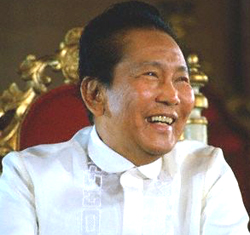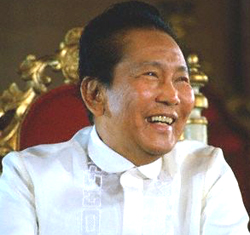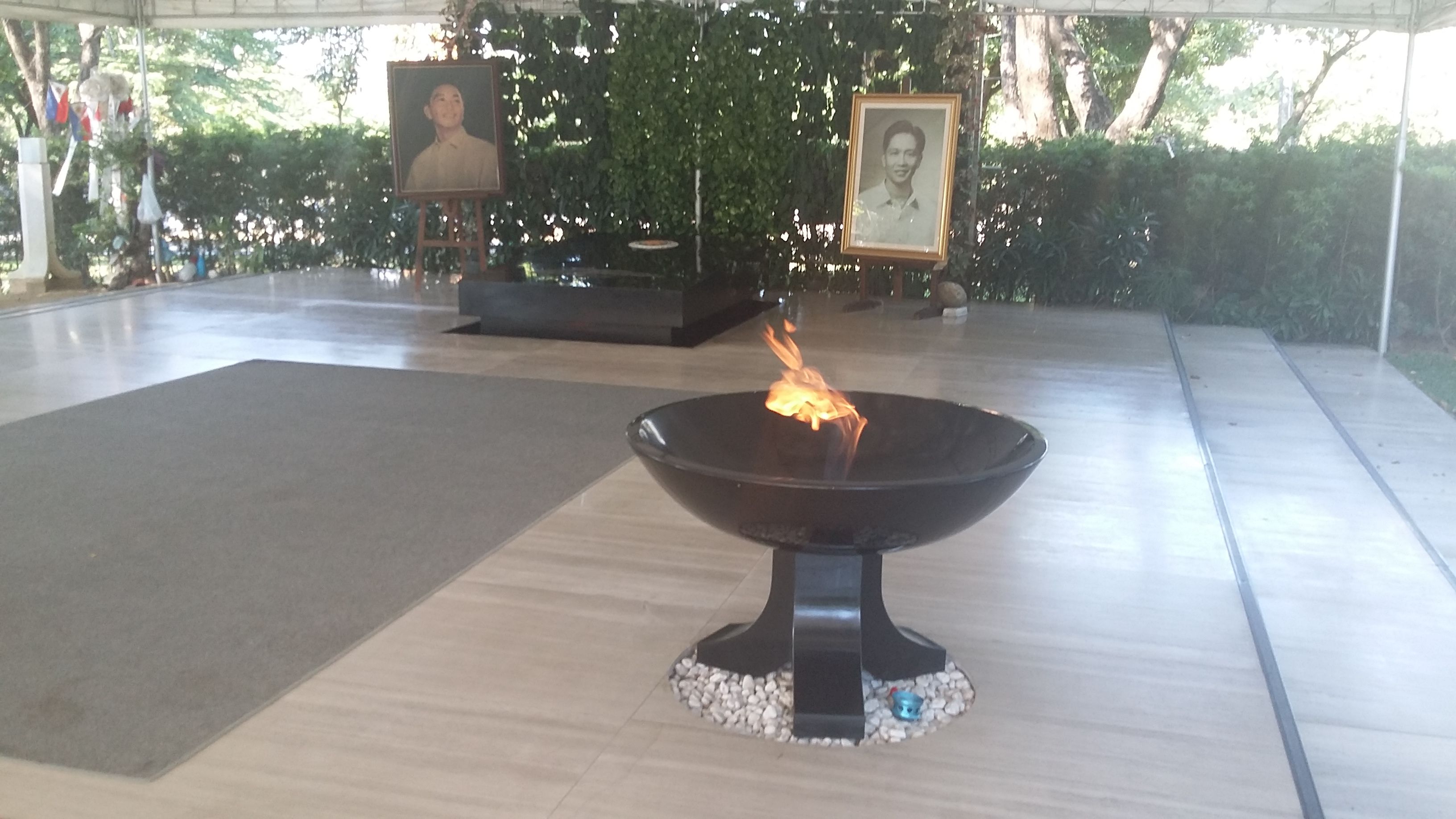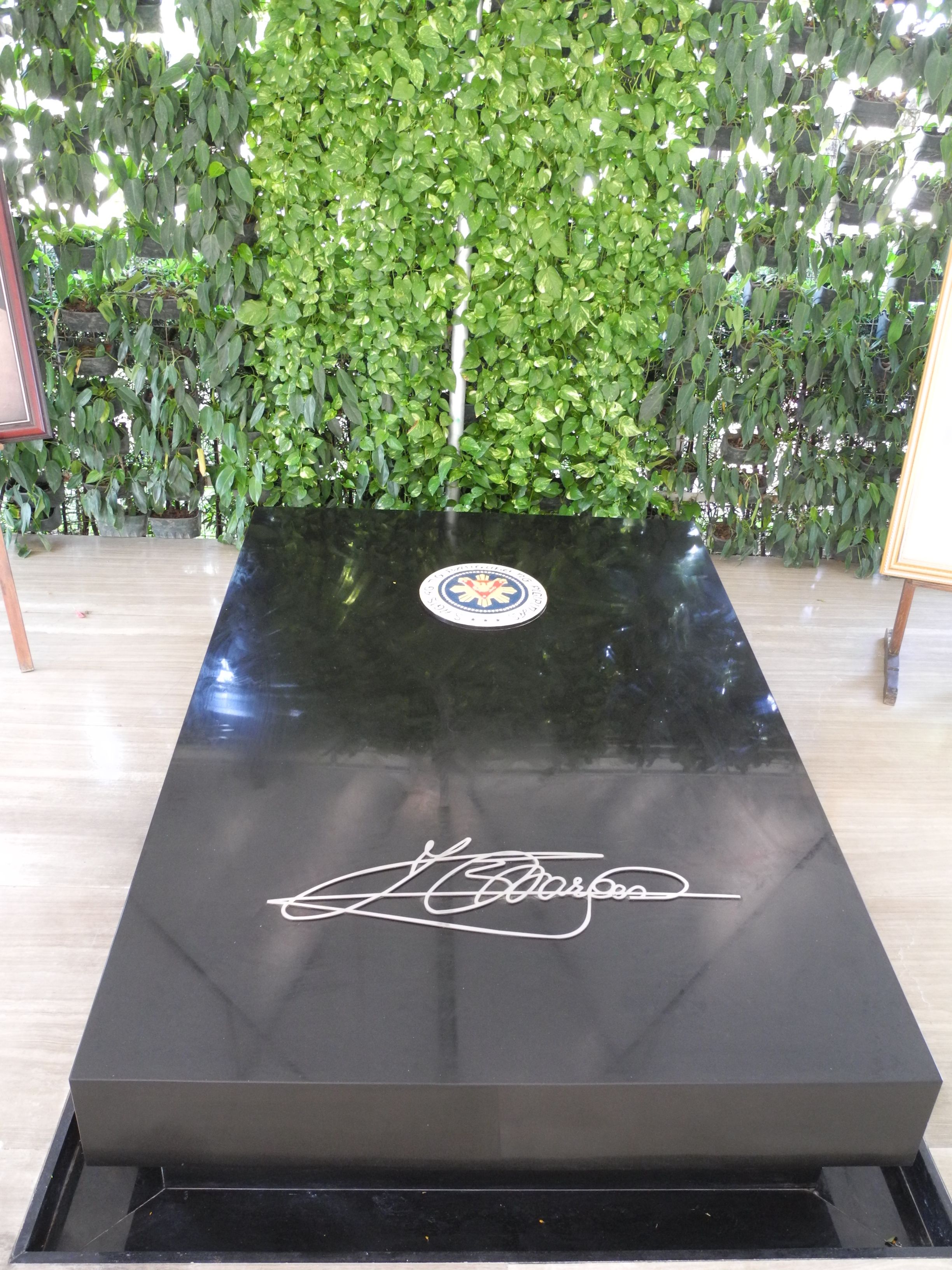Philippine President. His first term in office was bright and promising. He put teeth in the tax collection system of the country resulting in a robust economy while developing the country's rundown infrastructure. President Marcos liberalized trade with the world, hastened industrialization, and improved agricultural production to make the country self-sufficient in food. Throughout his 20-year tenure, Marcos maintained a close alliance with the United States. He was born in Sarrat in the Province of Ilocos Norte to Mariano Marcos, a lawyer, and Josefa Edralin, a school teacher. He was an exceptional and bright student while attending local schools and then going on to the University of the Philippines. While a student, an incident occurred, signaling events ahead. Marcos was indicted for the assassination of Assemblyman Julio Nalundasan and convicted.... however, he was acquitted the following year by the Philippine Supreme Court. He completed his studies while incarcerated and came away with a law degree. World War II found him in the armed forces, serving as an officer. He was Captured by the Japanese and survived the Bataan Death March to Central Luzon escaping and becoming a member of the Filipino guerrilla resistance. He entered politics after the war, working his way through the Philippine Congress to become president in 1965. He was re-elected in 1969, and three years later, while battling civil strife from Muslim and Communist insurgents, he suspended the constitution, declared martial law, and became a dictator. During these years, his regime was marred by widespread corruption and political mismanagement. The assassination of political foe Benigno Aquino Jr. was the deed that put in motion the "People Power movement," spearheaded by Cardinal Jaime Sin espousing nonviolent peaceful protests. Marcos allowed an election after the killing with Benigno Aquinos' widow, Corazon, as his opponent. Marcos claimed victory in the obviously rigged election, resulting in a popular uprising forcing him to leave the country. The results were reversed, and Corazon Aquino became President. Subsequently, the US was non-gratis and ordered to close its military bases, and relations to this day remain cold. The US government furnished a plane, and Marcos arrived in Honolulu with bags of gold, jewels, and cash. What he couldn't carry from the Philippine treasury, he had stashed in secret accounts all over the world. He died of heart failure in Honolulu at age 72. The strange odyssey of his body began upon his death. The government in the Philippines denied the return of the body, so it was interred in a private air-conditioned mausoleum at Byodo-In-Temple on the island of Oahu. The power company soon threatened to suspend power when payments fell in arrears by thousands of dollars, but a benevolent admirer picked up the tab. Twelve years after his death, his remains were allowed back into the country during the administration of President Fidel Ramos, a distant Marcos relative. An attempt to bury the remains at Libingan ng Mga Bayani, the national cemetery where the country's heroes are interred, was met with fierce opposition although a tomb had been prepared for him. Marcos' remains were kept at a mansion in Batac, Ilocos Norte Province, in an air-conditioned room. They were later moved to the Marco family mausoleum located in the village cemetery in Batac while former First Lady Imelda Marcos looked for a suitable burial place. Ferdinand Marcos' body lay in state in a glass viewing case inside a refrigerated crypt. He was on perpetual view, and a constant entourage of mourners and viewers came to pay their respects, including Imelda. His family refused to bury him until he was allowed full military honors provided by the government. President Rodrigo Duterte approved Marcos's burial in the cemetery, and he was finally interred at Libingan ng mga Bayani on November 18, 2016.
Philippine President. His first term in office was bright and promising. He put teeth in the tax collection system of the country resulting in a robust economy while developing the country's rundown infrastructure. President Marcos liberalized trade with the world, hastened industrialization, and improved agricultural production to make the country self-sufficient in food. Throughout his 20-year tenure, Marcos maintained a close alliance with the United States. He was born in Sarrat in the Province of Ilocos Norte to Mariano Marcos, a lawyer, and Josefa Edralin, a school teacher. He was an exceptional and bright student while attending local schools and then going on to the University of the Philippines. While a student, an incident occurred, signaling events ahead. Marcos was indicted for the assassination of Assemblyman Julio Nalundasan and convicted.... however, he was acquitted the following year by the Philippine Supreme Court. He completed his studies while incarcerated and came away with a law degree. World War II found him in the armed forces, serving as an officer. He was Captured by the Japanese and survived the Bataan Death March to Central Luzon escaping and becoming a member of the Filipino guerrilla resistance. He entered politics after the war, working his way through the Philippine Congress to become president in 1965. He was re-elected in 1969, and three years later, while battling civil strife from Muslim and Communist insurgents, he suspended the constitution, declared martial law, and became a dictator. During these years, his regime was marred by widespread corruption and political mismanagement. The assassination of political foe Benigno Aquino Jr. was the deed that put in motion the "People Power movement," spearheaded by Cardinal Jaime Sin espousing nonviolent peaceful protests. Marcos allowed an election after the killing with Benigno Aquinos' widow, Corazon, as his opponent. Marcos claimed victory in the obviously rigged election, resulting in a popular uprising forcing him to leave the country. The results were reversed, and Corazon Aquino became President. Subsequently, the US was non-gratis and ordered to close its military bases, and relations to this day remain cold. The US government furnished a plane, and Marcos arrived in Honolulu with bags of gold, jewels, and cash. What he couldn't carry from the Philippine treasury, he had stashed in secret accounts all over the world. He died of heart failure in Honolulu at age 72. The strange odyssey of his body began upon his death. The government in the Philippines denied the return of the body, so it was interred in a private air-conditioned mausoleum at Byodo-In-Temple on the island of Oahu. The power company soon threatened to suspend power when payments fell in arrears by thousands of dollars, but a benevolent admirer picked up the tab. Twelve years after his death, his remains were allowed back into the country during the administration of President Fidel Ramos, a distant Marcos relative. An attempt to bury the remains at Libingan ng Mga Bayani, the national cemetery where the country's heroes are interred, was met with fierce opposition although a tomb had been prepared for him. Marcos' remains were kept at a mansion in Batac, Ilocos Norte Province, in an air-conditioned room. They were later moved to the Marco family mausoleum located in the village cemetery in Batac while former First Lady Imelda Marcos looked for a suitable burial place. Ferdinand Marcos' body lay in state in a glass viewing case inside a refrigerated crypt. He was on perpetual view, and a constant entourage of mourners and viewers came to pay their respects, including Imelda. His family refused to bury him until he was allowed full military honors provided by the government. President Rodrigo Duterte approved Marcos's burial in the cemetery, and he was finally interred at Libingan ng mga Bayani on November 18, 2016.
Bio by: Donald Greyfield
Family Members
Advertisement
See more Marcos memorials in:
Records on Ancestry
Advertisement








